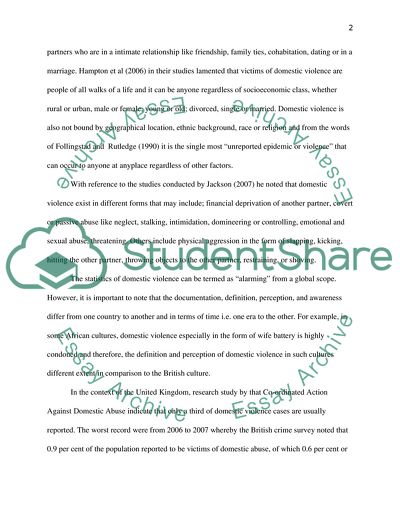Cite this document
(Domestic Violence: Why Do Women Stay in Abusive Marriages Research Proposal Example | Topics and Well Written Essays - 2250 words, n.d.)
Domestic Violence: Why Do Women Stay in Abusive Marriages Research Proposal Example | Topics and Well Written Essays - 2250 words. https://studentshare.org/sociology/1804869-research-proposal-on-domestic-violence-why-do-women-stay-in-abusive-relationships
Domestic Violence: Why Do Women Stay in Abusive Marriages Research Proposal Example | Topics and Well Written Essays - 2250 words. https://studentshare.org/sociology/1804869-research-proposal-on-domestic-violence-why-do-women-stay-in-abusive-relationships
(Domestic Violence: Why Do Women Stay in Abusive Marriages Research Proposal Example | Topics and Well Written Essays - 2250 Words)
Domestic Violence: Why Do Women Stay in Abusive Marriages Research Proposal Example | Topics and Well Written Essays - 2250 Words. https://studentshare.org/sociology/1804869-research-proposal-on-domestic-violence-why-do-women-stay-in-abusive-relationships.
Domestic Violence: Why Do Women Stay in Abusive Marriages Research Proposal Example | Topics and Well Written Essays - 2250 Words. https://studentshare.org/sociology/1804869-research-proposal-on-domestic-violence-why-do-women-stay-in-abusive-relationships.
“Domestic Violence: Why Do Women Stay in Abusive Marriages Research Proposal Example | Topics and Well Written Essays - 2250 Words”. https://studentshare.org/sociology/1804869-research-proposal-on-domestic-violence-why-do-women-stay-in-abusive-relationships.


